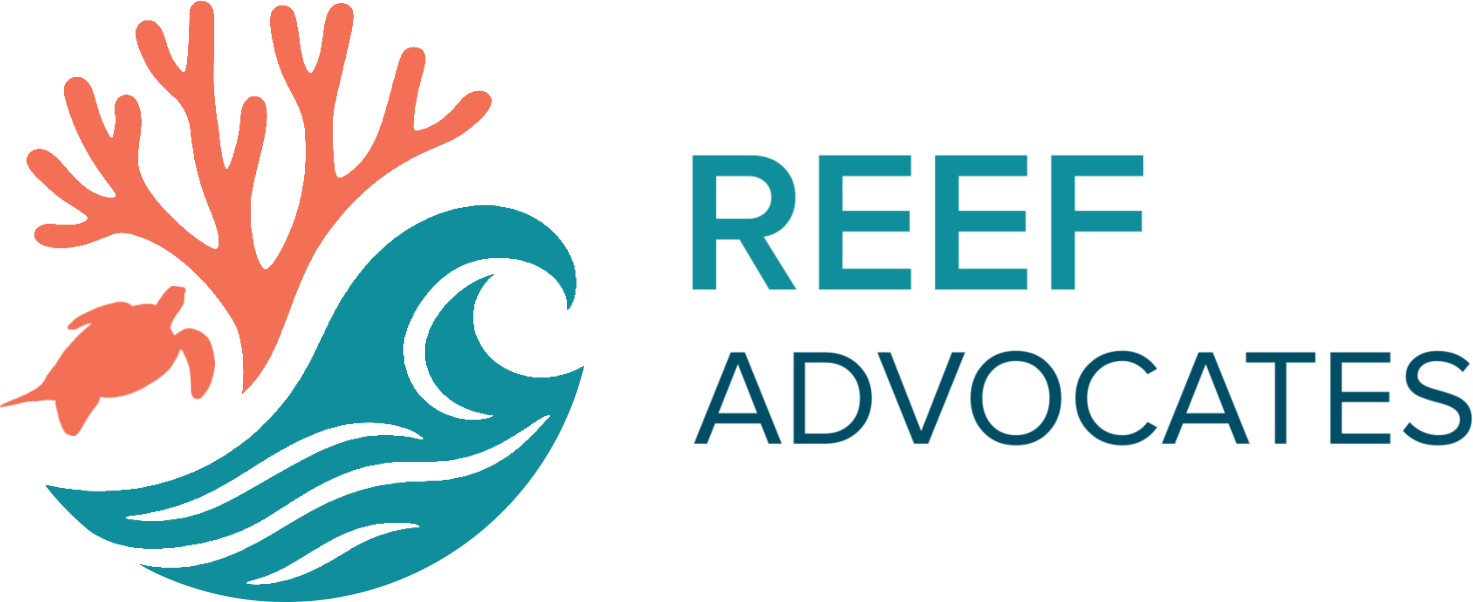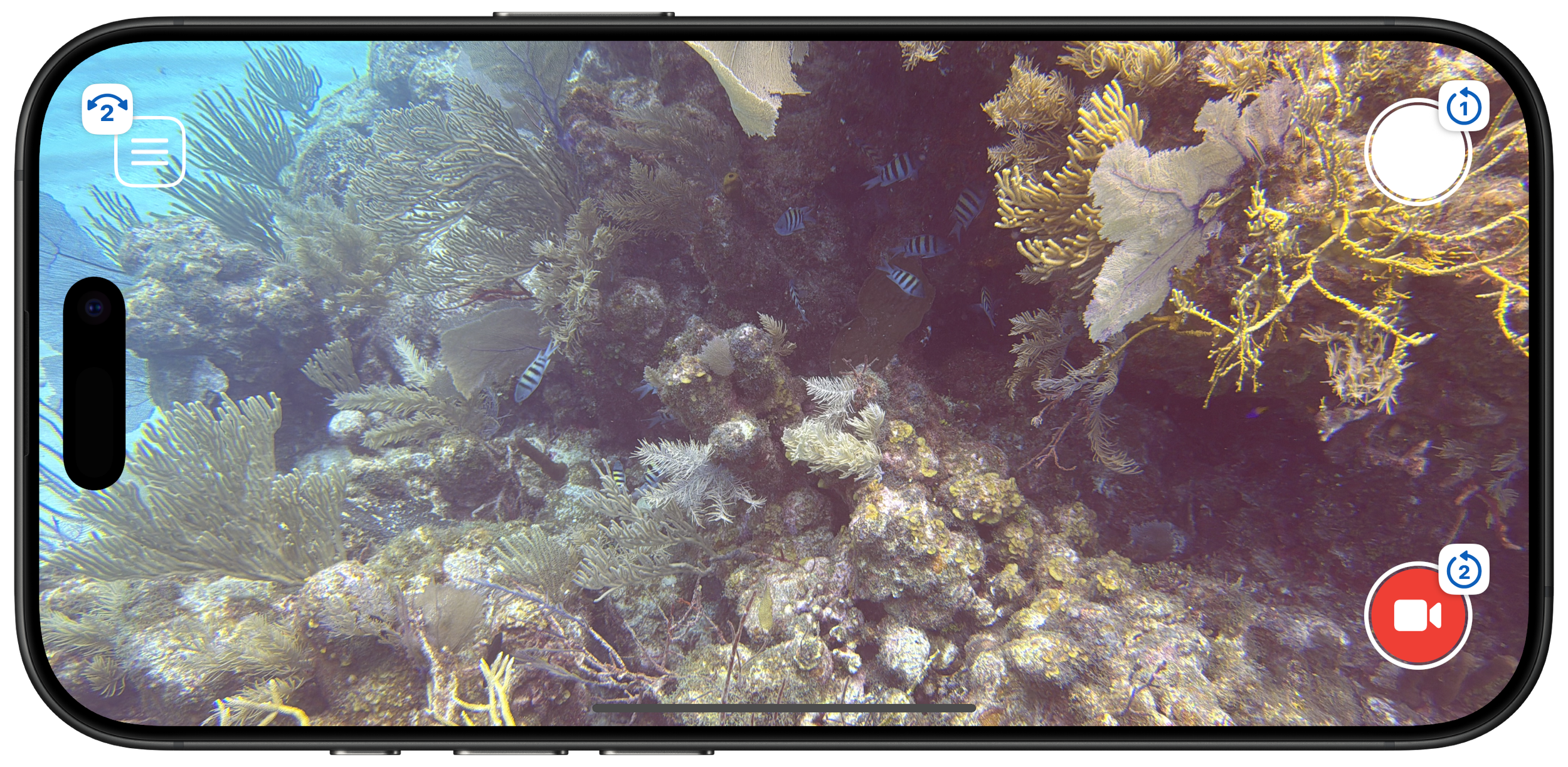
Our work
Together, technology and people create positive reef outcomes.
Through the INSIGHT Diver Network, we're empowering recreational SCUBA divers to become active contributors to reef monitoring and response. Divers use our mobile app to capture high-resolution imagery during their dives, transforming everyday dive experiences into ecological surveys.
By recognizing the unique value and scalability of imagery-based data collection, the INSIGHT Diver Network is designed to accelerate and amplify the efforts of researchers, conservationists, and reef managers around the world. Every image captured helps fill critical knowledge gaps and informs strategies to protect reefs more effectively.
Our program is designed to integrate seamlessly into the dive industry. We're establishing a consistent presence at reef sites by partnering with dive operators, fostering long-term engagement, conservation literacy, and ecosystem stewardship within the diving community.
Our iPhone app feels like a regular camera app, but automatically captures reef data behind-the-scenes.
iPhone is a trademark of Apple Inc., registered in the U.S. and other countries and regions.
Key program features
Scalability
The program naturally scales to any reef site regularly visited by divers.
Cost efficiency
The projected cost (at scale) per site survey is under $100.
No training required
There is no program-specific diver training requirement, although best practices will be suggested.
Frequently asked questions
-
It stands for the Initiative for Subsurface Investigation of Global Habitat Trends.
-
Many (if not most) recreational divers already dive with cameras for personal use. Divers need only quick guidance on how to capture the best imagery suitable for the program. In contrast to underwater visual census (UVC) surveys, there is no particular training required to participate in data capture.
Additionally, imagery and image processing techniques are inherently scalable. Imagery is a rich data set that includes information that might be missed with UVC surveys (e.g. the average proximity of one reef species to another). When a new question needs to be answered, retained imagery can always be referenced and reprocessed with ever improving techniques.
-
Recreational SCUBA divers are natural stakeholders in the health of the reef ecosystems they love. By nature of their training, divers are inherently capable of technical instruction and therefore represent a prime opportunity for high-quality, crowdsourced citizen science.
Divers are the key to the program’s inherent scalability. The program can thrive at thousands of sites frequented by divers. There is no other technique, technology, or group that is capable of achieving comparable scale of underwater data collection.
-
Most recreational dives are organized through dive operator businesses which often visit the same 12-20 sites in their area. Dive operator participation enables frequent and consistent data capture at target sites.
Dive operators are not responsible for data capture themselves. Their role is to be an advocate for a few reef sites by encouraging their dive customers to participate in the program. This also minimizes the impact of the program on operations and enables dive masters and guides to focus on diver safety.
-
Many reef monitoring programs often capture data from the same site at intervals of one year or longer. Yet, higher survey frequency (higher temporal resolution) offers information that is critical to reef conservation.
For example, consider a coral bleaching event that lasts 2-4 weeks. Capturing “before and after” data sets may identify surviving coral colonies. But which surviving individual coral colonies experienced the most thermal stress (the ones that “barely made it”) and which were most resilient during the event? What factors were present during the event that may have played a role in the resilience (or lack thereof) of the reef? This is just one example of the type of data that remains largely uncaptured at scale that is only possible with high temporal resolution.
The way the INSIGHT Diver Network engages the recreational SCUBA community — in particular, by asking dive operators to advocate for specific sites — makes it natural to conduct frequent surveys. It is actually easier to routinely capture data at advocate sites than to organize occasional or one-time surveys.
Frequent site visits also takes the pressure off participating divers to capture everything perfectly. If a spot on the reef is missed or if there is a technical malfunction, there’s always the next survey to try again.
-
The INSIGHT Diver Network not only has unique potential for global reach and cost-effective scalability — the data it captures can fill in gaps left by other reef surveys.
Other reef survey programs often miss multiple of the following data attributes:
Depth in the water column: Other survey programs, particularly underwater visual census (UVC) surveys, typically focus on the shallowest 5 to 10 m of the water column, in part because the manual aspect of UVC surveys takes time making allowable dive bottom time (shorter at depth) become a limiting factor. The INSIGHT Diver Network can achieve up to 30 m due to its focus on quicker imagery capture.
High temporal resolution: Other survey programs, especially those relying on professional conservation divers, often visit a particular site annually or less frequently. Where such programs achieve higher frequency, the scope is often limited to a short-term project. Because dive operators typically operate on a weekly schedule, the INSIGHT Diver Network targets weekly site surveys.
Imagery capture as a primary objective: Other survey programs often do not capture imagery, especially not in a volume sufficient to 3D map a site or train more capable machine learning algorithms.
Diverse locations: Few reef survey programs have sustained global reach. On the whole, other survey programs tend to disproportionately emphasize the Great Barrier Reef, leaving data gaps among other reefs.
None of this is to say that other reef survey programs aren’t doing great work. They are! Reef conservation and management has long relied on this community of programs to make decisions based on the best available data.
The INSIGHT Diver Network has its own data gap. Automated imagery processing pipelines currently cannot match a UVC survey’s capability for species identification. We hope that the volume of imagery our program collects will help train more advanced algorithms to close this gap. Until then, the INSIGHT Diver Network can still contribute other novel data and metrics, joining the community of reef survey programs to together build the best possible picture of reef health.
We believe open collaboration is the only way to secure a brighter future for reefs. Therefore, we will be openly sharing our data, and we are actively seeking to work with researchers, technologists, and other conservation and survey groups.
Our Reef Intelligence platform is a developing, cloud-based analytics and insight engine that processes diver-submitted imagery and metadata. Using a combination of computer vision, ecological models, and an AI chat assistant, it translates raw data into clear, audience-specific insight – from academic-grade metrics to accessible summaries for reef managers, educators, and the public.
The platform will score reef health, detect site-level trends, flag early warning signs of degradation, and generate actionable insights tailored to each user group. These insights help guide timely interventions and long-term strategies to strengthen reef resilience. By combining human observation with AI interpretation, Reef Intelligence accelerates our collective ability to understand, communicate, and take action to protect coral ecosystems.
Together, the INSIGHT Diver Network and Reef Intelligence form a scalable, adaptive reef monitoring system, built not just to measure change, but to drive meaningful response.
3D reconstruction of a reef segment captured through our mobile app
The red boxes are individual camera positions in each video frame used to make the reconstruction.




